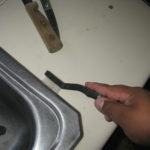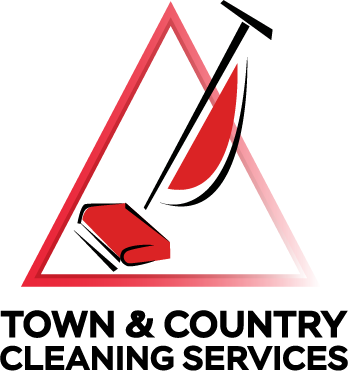House Cleaning and Disinfecting
House cleaning and disinfecting involves real science.The resulting cleanliness and health value can be verified by scientifically objective measures when needed. At a recent meeting of the Chapel Hill Leads Group (which meets every Wednesday morning at the American Legion Post #6 off Legion Road),Town & Country Cleaning Services co-owner and President, Bruce Vance, gave a brief talk that left people gasping and applauding. That is one of the rewards generated by public speaking when you’re passionate about your topic – and yes, even if your topic is about something as mundane (and as taken for granted) as cleaning!
Traditional Disinfecting
Bruce revealed that disinfectants are governed under the same Federal organization (FIFRA) as pesticides. That hints at their possible toxicity and the audience was taken aback. Not all disinfectants are toxic, but many are not safe for food surfaces and should even be wiped off of non-food surfaces after they have done their job.

A toothbrush can dislodge germs even in tight spaces
Most people, whether cleaning their own home or serving others as professionals (other than in hospitals, surely) are not following label directions carefully or at all – a violation of Federal law, by the way. Every disinfectant we have encountered has a number of steps that are frequently ignored. Organic substances will render disinfectants ineffective, requiring pre-cleaning PRIOR to the disinfectant step. They also require a minimum dwell time during which the surface must remain wet with the disinfectant. This can be as brief as 30 seconds and as long as 10+ minutes in order to achieve the listed kill rate of the pathogens claimed on their product’s label.
Measuring Disinfection with an ATP Meter
Bruce discussed and demonstrated the ATP meter, which allows a relative measure of ‘organic load’ on a non-porous surface. ATP stands for Adenosine Triphosphate, a component of all living or once-living organisms. The system uses swabs to clean a roughly 4-inch by 4-inch part of a chosen surface. Once the swab collects the sample it is inserted into the meter which is able to measure the efflourescence given off by the ATP in the sample and transforms the measurement of that pale light into a number. For a useful frame of reference, know that a reading of 100+ is dirty, even for a non-commercial kitchen.
Collecting the Sample(s) for the ATP Meter
The sample was taken from one of the tables in the normal meeting room where breakfast had been laid out. The initial sample read a whopping ‘526’ before any attempt to clean up began.

ATP Meter registers ‘organic load’ on a hard surface
He once did a similar demonstration at a convention hotel and the initial swab gave a reading of over ‘1000’! From the same breakfast table, one sample was taken from a 4×4 area cleaned by a disinfectant wipe; a second sample was taken from a neighboring 4×4 area close to but not contiguous to the first. The second sample area was cleaned by an organic Shaklee product (Basic H2®) supplied by member Suzanne Chaney and one of Town & Country’s hospital-grade microfiber cloths from Perfect Clean.
Demo Results
The first sample, after cleaning an area using a disinfecting wipe, yielded a result (from ‘526’) down to ‘326’. The second sample, after cleaning with the Basic H2 and microfiber came in at only ’58’). This was where the audience gasped and applauded. In prior tests by other investigators, a ‘rebound’ effect was common on the following day – where disinfecting wipes had been used, the organic load number rose significantly due to the food source provided by residue from the wipe’s ingredients. Note that the 2nd sample was cleaned by a system that removes soils and pathogens whereas a disinfectant acts by killing various ones when used correctly. The removal system works without spreading toxins on the surface but still achieves a remarkably impressive reduction of pathogens. Organic load measurements have been statistically shown to be correlated to levels of pathogens. Soils and pathogens are readily removed during laundering and for extra assurance, the microfiber wipers at Town & Country Cleaning Services are run through a sanitizing steam cycle each time.
Bruce thanks the Chapel Hill Leads Group for the opportunity to share his own and our company’s passion for creating healthy spaces and to demonstrate one of the ways we are able to prove the effectiveness of our chosen systems.
Updated and edited by the author for improved clarity on May 4, 2017.

